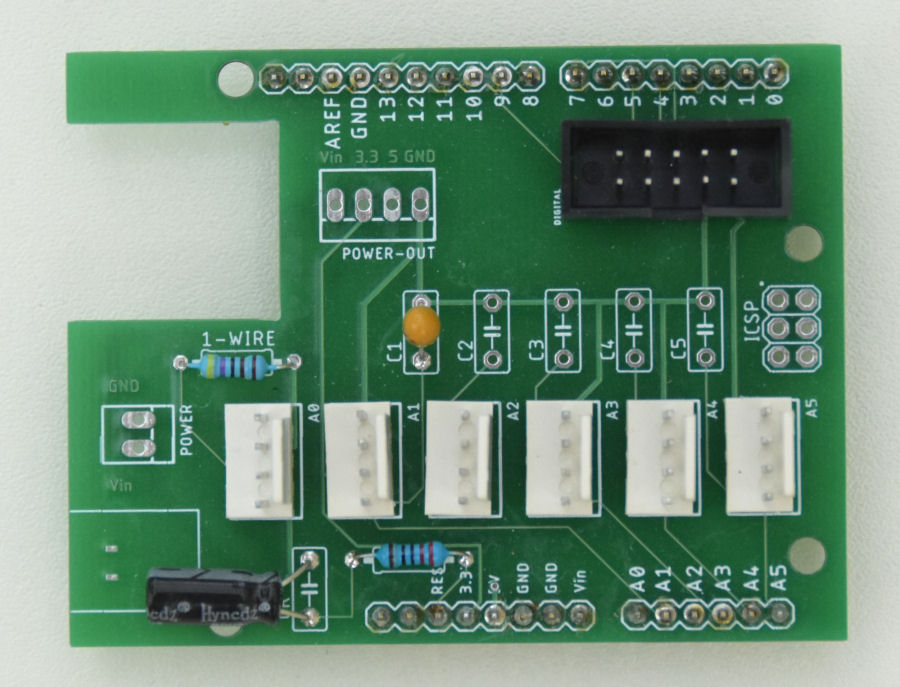

The Smartisant Arduino Shield SHLD1 is one of our smart home building blocks and makes it really simple to connect a wide range of sensors and devices to your smart home, using an Arduino.
This shield is designed to work with the Arduino Uno but we recommend it is used with the Arduino Mega 2560, simply because it has a lot more memory for the code required to handle the many sensors that can be connected via this shield. It is designed to sit on top of an Ethernet Shield in 'piggy back' fashion.
The shield is available as in PCB/kit form only. The kit includes the SIL pins to enable it to be fitted on top of an Arduino, along with the 220µF/15V electrolytic capacitor and 220Ω resistor for the RC delay circuit.
The board supports the following features:
This shield supports a 2-way Molex connector for power (Vin) to the shield and Arduino. Typically 7.5V dc to 10.0V dc is used and this goes to the Arduino's on-board regulator. It is possible to power an Arduino using a Power over Ethernt (PoE) splitter via this connector.
It also supports a 4-way Molex connector, exposing power to other peripherals and to allow a direct 5V dc feed to the processor and all its accessories. The pins are GND, Vin, +3.3V and +5V.
This shield features a board cut-out, to fit around the Ethernet module on the Ethernet shield.
There is a known issue when using Ethernet shields with the Arduino Uno or Mega 2560. This shield supports an on-board RC circuit to delay start-up until Ethernet shield has started and this requires installation of a 220µF capacitor and a 220Ω resistor.
Six 4-way Molex connectors expose the analogue input pins A0 to A5. A1 to A5 have the option of a 0.1µF capacitor from input pin to GND, to help stabilise the analogue input readings. These pins can also be used as digital inputs.
An on-board 10-way shrouded header connector is used to simplify connection of our other input or output boards. This exposes Arduino pins 2 to 9, +5V and GND. The pins 2 to 9 can be used as either inputs or outputs and pins 2 and 3 support interrupts.
When used as inputs you can then connect 5V sensors using the Smartisant 8-channel IO Board IO1. For 12V sensors you can use the Smartisant 8-Channel Fused Input Board IP1 or Smartisant 8-Channel 12V Input Board IP2.
When used as outputs testing can be performed using the Smartisant Output Tester OPTEST1. You can then connect 5V devices using the Smartisant 8-channel IO Board IO1. For 12V (or higher) the 10-way shrouded header connector can be used with the Smartisant 8-Channel Output Board OP2 or Smartisant 8-Channel Output Board OP3 to control higher voltage and higher current devices.

The PCB does not have to be fully populated with parts and supports a number of optional features. This means is can be tailored to each application/installation, thus saving unnecessary parts costs.
We have a number of examples in the applications notes, showing how you can easily connect a wide range of sensors using this shield.